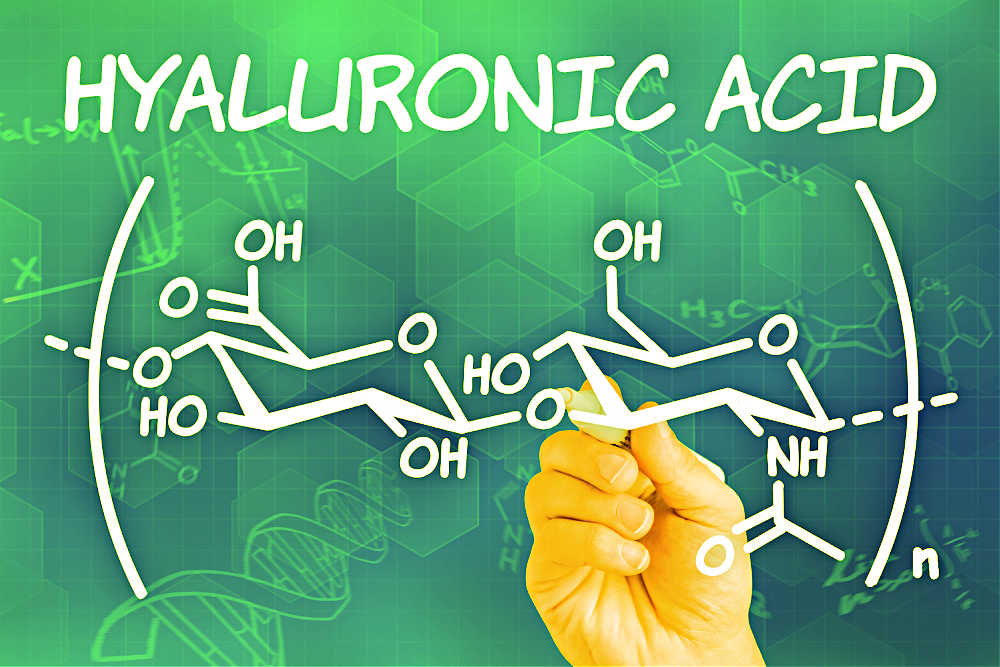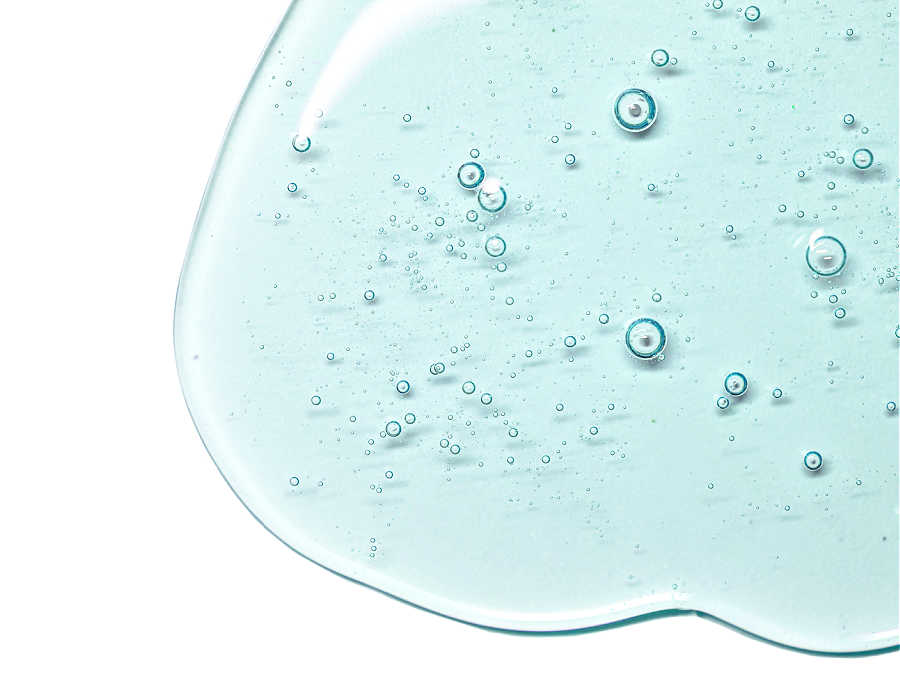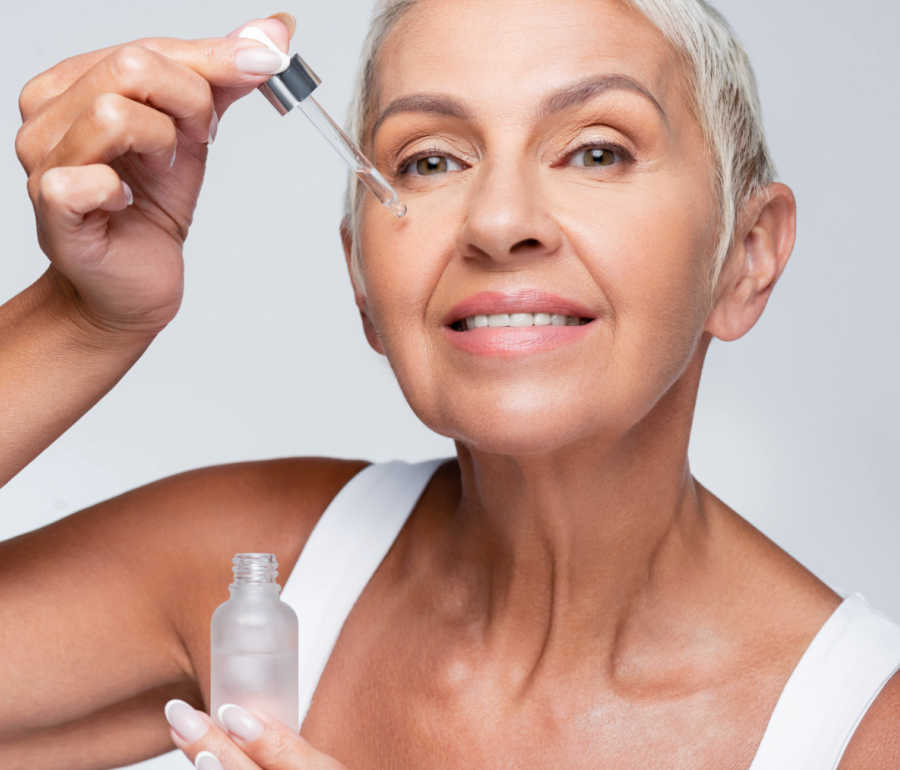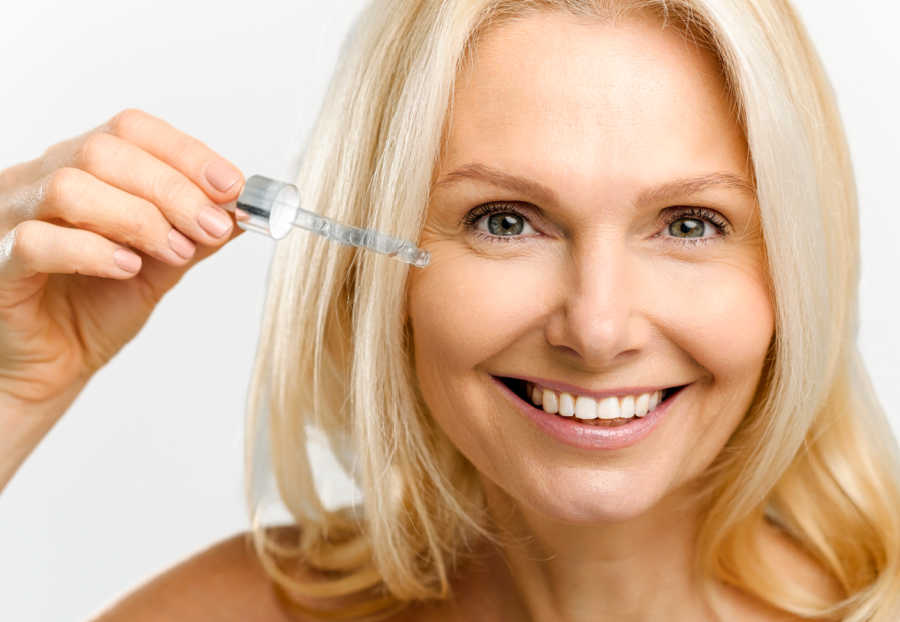As an Amazon Associate, I earn from qualifying purchases and other affiliate links. I only recommend products I’ve tried or researched.
- Home
- Popular Ingredients
- What Is Hyaluronic Acid
What is Hyaluronic Acid Serum? How It Works & How to Use It Right
by: Linda Robison / Facial Fitness Specialist
What is hyaluronic acid serum?
And how can it make your skin look smoother, firmer, and more hydrated?

What does hyaluronic acid actually do for your skin?
So what is hyaluronic acid—and why does everyone talk about it?
It’s something our skin naturally makes. Think of it as your skin’s moisture magnet—it helps keep things firm, smooth, and nicely cushioned. Kind of like scaffolding that holds hydration in place.
But here’s the catch: we lose it as we age. That’s why skin can start to look thinner, duller, or more crepey.
Topical hyaluronic acid (like in serums and creams) can help make up for that loss. It pulls water into the skin, making it look more hydrated and plump.
In fact, some studies show that HA can boost skin moisture, elasticity, and firmness—and may even act like a gentle antioxidant that helps slow down signs of aging.
And yes, it can also help soften the look of fine lines and wrinkles. (I noticed a smoother look around my eyes after about 3 weeks of daily use—especially when I applied it the right way.)
How it helps with aging, dryness, and fine lines

As we age, our natural levels of HA decline.
Applying HA serum can help improve the appearance of parched, dehydrated, wrinkled skin by drawing moisture to the dermis.
And while it won’t permanently restore skin tissue levels, daily application of super low molecular weight hyaluronic acid can help provide a temporary lift and plumpness to the skin.
Don’t let the word “acid” scare you, there is nothing acidic or harsh about this mucopolysaccharide.
In fact, it's suitable for all skin types - from oily/acne prone to sensitive irritated skin.
However, results can vary depending on several factors, including:
- the type of hyaluronic acid (HA) you use
- the strength of HA
- how and when you apply it
Keep reading to learn more…
A quick look at how hyaluronic acid works

Hyaluronic acid is a natural substance (a group of sugar molecules called polysaccharides) naturally found in the body, like in the skin, joints, and eyes.
It acts as a cushion and lubricant, providing lubrication for movement and helping to protect joints from wear and tear.
Note: With age, the hyaluronic acid levels naturally decline, especially in the skin. This often results in drier, thinner skin. Which is why it's so important to manually replace it by using a topical serum or cream.
How to apply hyaluronic acid

What I learned from using it wrong at first
I've tried HA several times without any noticeable effects, until I learned how to apply it correctly for best results:
- Left over makeup or sunscreen can impede absorption. So, make sure your face is super clean.
- Hyaluronic acid serum is best applied on damp, not wet skin. If your face is too wet, it won't go on evenly. So, after washing your face, lightly blot your face dry, but leave it slightly damp.
- After application, let it partially dry and absorb, then follow-up with a moisturizer.
This is the special tip for best results! The moisturizer will help seal the serum deep into the skin.
Applying hyaluronic acid on your face is like putting a little air into a deflated tire. Lines and fold are a little less visible and your whole face looks plumper, fuller with a little less sag.
When to apply it for the best results
When is the best time to apply HA serum? I like to apply it twice a day, in the morning and at night.
First thing in the morning, after washing your face and before applying your moisturizer and sunscreen.
And, again, at night, after washing your face and before your favorite nighttime moisturizer.
How to choose the right hyaluronic acid serum

There are a few things to consider before buying a hyaluronic acid serum for your face.
Look for products that contain one or all three of the characteristics listed below for the best results:
- First: Start with low-molecular-weight HA
- Second: Multi-molecular = deeper hydration. NIOD Multi-Molecular Hyaluronic Complex from Amazon is good one to try.
- Third: Slow-release formulas give longer-lasting results. Right now, the only company I am aware of that makes a slow release hyaluronic acid serum is SkinMedica's HA5 Rejuvenating Hydrator. The only problem is it's more expensive.
Other things to look for?
There are different types of hyaluronic acid used in cosmetics. They include:
- hydrolyzed hyaluronic acid
- sodium acetylated hyaluronate
- sodium hyaluronate *
* Look for products that contain sodium hyaluronate for best results.
Can hyaluronic acid dry out your skin?
It seems odd, right? A hydrating serum that could make your skin feel dry?
Here’s the deal: hyaluronic acid pulls in moisture—but if there’s not enough moisture around, it can actually draw water out of your skin instead.
Here's when HA can backfire:
How (and when) you apply it matters.
1. Dry air = dry skin
If the air around you is super dry (like during winter or in AC), HA might pull moisture from your skin instead of the air—leaving it tight or dehydrated.
2. You applied it to bone-dry skin
HA works best on damp skin. If your skin’s totally dry when you put it on, it has nothing to grab onto—and that’s when it can steal hydration from within.
3. You didn’t seal it in
Think of HA like a magnet that grabs water. But if you don’t follow up with a good moisturizer or oil, all that water can just evaporate.
My tips to avoid the dryness trap:
Follow these tips for best results:
- Always apply HA on slightly damp skin—not wet, not dry.
- Lock it in with moisturizer right after.
- Don’t overdo it. A little goes a long way.
- Watch how your skin reacts and adjust based on what it needs.
If your skin ever feels tight or flaky after using HA, that’s your clue to tweak your routine. And if you're unsure, it's always smart to check in with your skincare pro.
Final thoughts: Is hyaluronic acid worth using?
Hyaluronic acid is a great natural skin plumper that attracts and binds water molecules for a bouncy, firm appearance. It is naturally present in our skin but declines with age.
Applying it topically via serums or creams can improve dry skin and fine lines, increase skin moisture and elasticity and slow cellular skin aging, decreasing the depth of wrinkles in as soon as 2 to 8 weeks.
Hyaluronic acid is ideal for all skin types. For best results, it should be applied on clean, damp skin and sealed with a moisturizer.
Look for products with low-molecular-weight, multi-molecular and slow-release formula for best results.
Overuse or incorrect use can lead to skin dryness. So, always apply it on damp skin and always follow up with moisturizer to help seal it in.
FAQ: Hyaluronic Acid
Q: Can I use hyaluronic acid and tretinoin together?
Q: Can I use hyaluronic acid and tretinoin together?
A: Yes, after the tretinoin has been applied and absorbed, it's a good idea to apply hyaluronic acid serum or cream to seal in moisture and prevent the drying effects of tretinoin. However, to be safe, always double check with your tretinoin provider before applying.
Q: Does hyaluronic acid work?
Q: Does hyaluronic acid work?
A: Yes, but it's important to use products (serum is best) that contain high amounts of low-molecular-weight hyaluronic acid and in the form of sodium hyaluronate.
Q: Can I use hyaluronic acid serum under eye?
Q: Can I use hyaluronic acid serum under eye?
A: Yes, if the product is meant for the face and eye area, you can use HA serums and creams under and around the eye area. Always follow directions on the bottle.
Q: Do I apply retinol or hyaluronic acid first?
Q: Do I apply retinol or hyaluronic acid first?
A: It's best to apply your retinol first and let it soak in as directed. Then apply the hyaluronic acid and follow that with your favorite moisturizer.
Q: Can I use hyaluronic acid if I have rosacea?
Q: Can I use hyaluronic acid if I have rosacea?
A: Yes! Hyaluronic acid serum is great for rosacea. It's hydrating, non-greasy, and won't inflame or irritate sensitive rosacea conditions.
Q: Hyaluronic acid vs glycolic acid, what's the difference?
Q: Hyaluronic acid vs glycolic acid, what's the difference?
A: Glycolic acid is a type of alpha-hydroxy acid (AHA).
It's a chemical exfoliant used to exfoliate dead skin cells by breaking the glue bonds between skin cells.
This allows the dead cells to slough off easily and leaves your skin smooth and clean. It also helps stimulate collagen production.
Hyaluronic acid is a humectant, which means it draws moisture to the skin. Both glycolic acid and hyaluronic acid (HA) should be used to improve aging skin.
You should use the glycolic acid first (following directions on the bottle) and then once it's rinsed off, and before you apply your moisturizer, apply a light layer of HA to hydrate the skin.
Q: Which is better hyaluronic acid moisture cream or serum?
Q: Which is better hyaluronic acid moisture cream or serum?
A: The serum is usually more potent than the cream. Personally, I'd rather use the serum and then follow up with my favorite moisturizer cream.
Q: Can hyaluronic acid be used for stretch marks?
Q: Can hyaluronic acid be used for stretch marks?
A: According to the American Academy of Dermatology, two large studies showed that applying hyaluronic acid to early stretch marks made the stretch marks less noticeable.
Other pages you might like:
Hyaluronic Acid Studies
About the Author:
Linda Robison is a Facial Fitness Specialist and the founder of Anti-Aging Beauty Zone. With decades of hands-on experience, she shares practical, natural ways to lift and brighten mature skin—without expensive or invasive treatments.
Before you go ....
Please tap on the💙in the bottom right corner if you found this page helpful.
FOLLOW ME FOR MORE TIPS:
SHARE OR SAVE FOR LATER:




